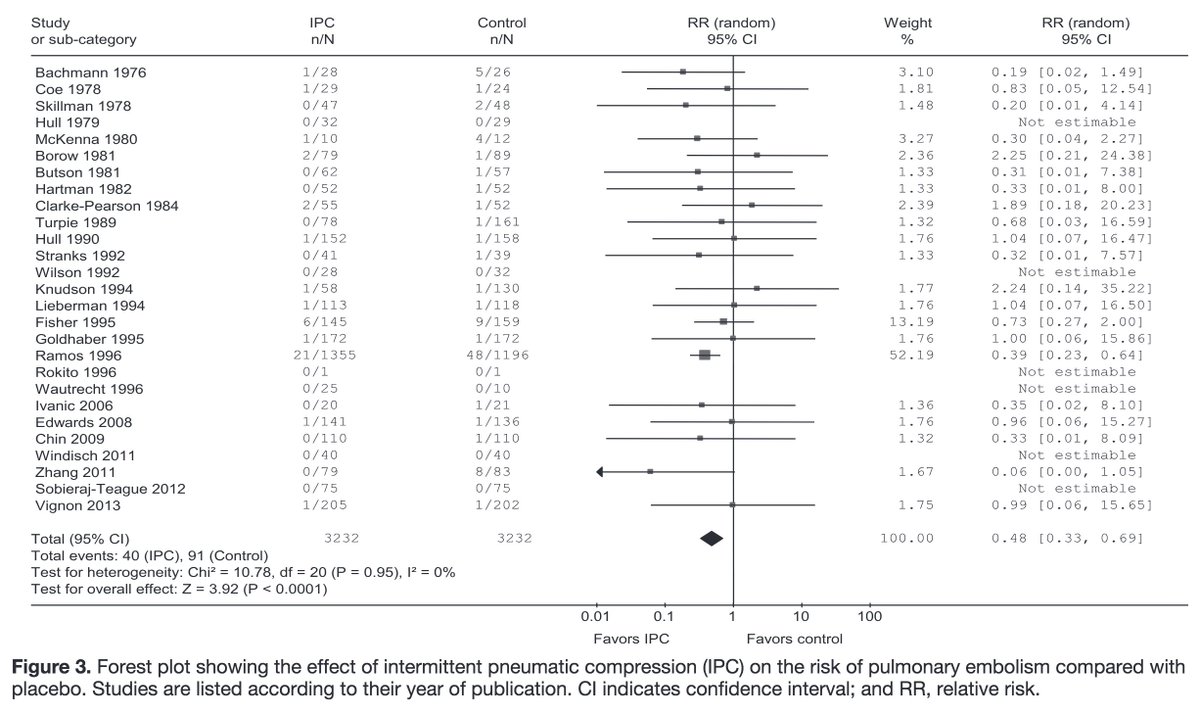Why is the routine use of intermittent pneumatic compression for the prevention of venous thromboembolism in medical ward patients a #TWDFNR?
This thread is meant to complement the recently published article appearing in @JHospMedicine
journalofhospitalmedicine.com/jhospmed/artic…
First, a question: how often do you use intermittent pneumatic compression (IPC) for venous thromboembolism in medical ward patients?
One reason why you might be inclined to use IPC: it has proven effectiveness in high-risk populations (e.g., surgical, trauma, stroke).
For pulmonary embolism:
RR 0.48, 95% CI [0.33-0.69]
NNT = 63
ncbi.nlm.nih.gov/pubmed/23852609

As Holleck and Gunderson write in their paper, there are other reasons why IPC may be non-beneficial and/or harmful, including...
✔️poor adherence
✔️potenial increase in falls and skin breakdown
✔️cost
...among others.
Holleck and Gunderson end their review of IPC to prevent VTE in medical ward patients with five recommendations.
Not convinced that intermittent pneumatic compression is a #TWDFNR? Read the full article for a more complete argument!
journalofhospitalmedicine.com/jhospmed/artic…






